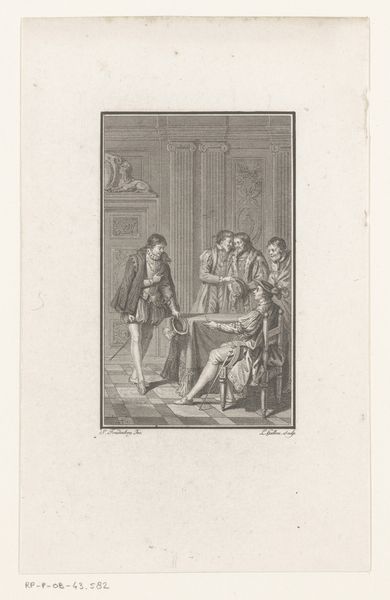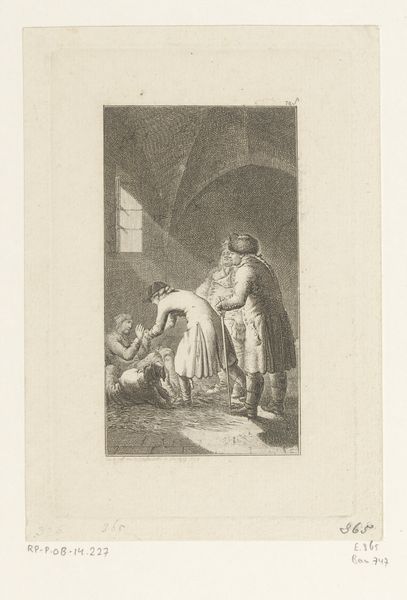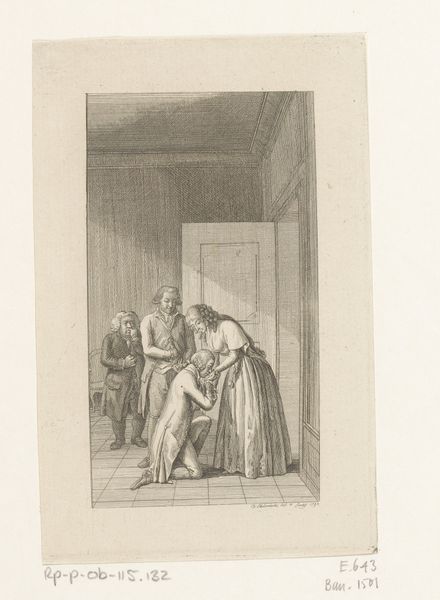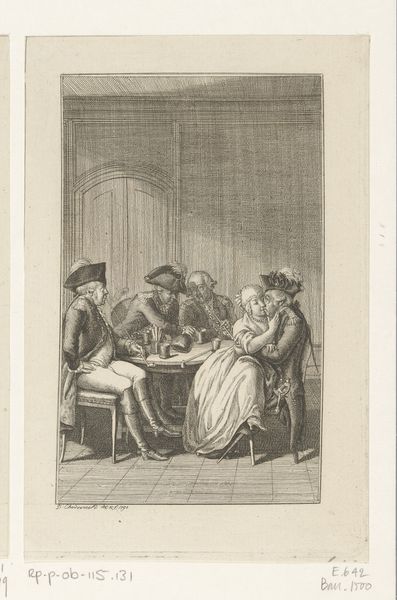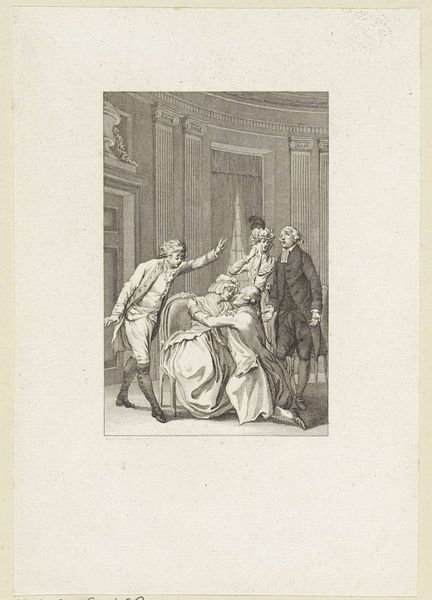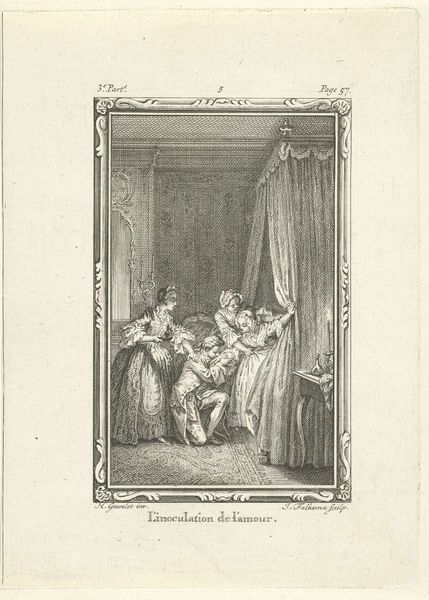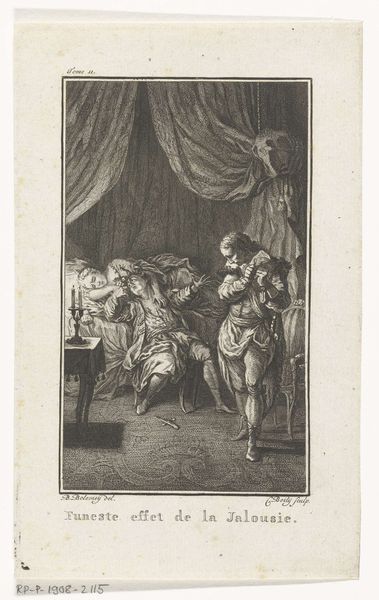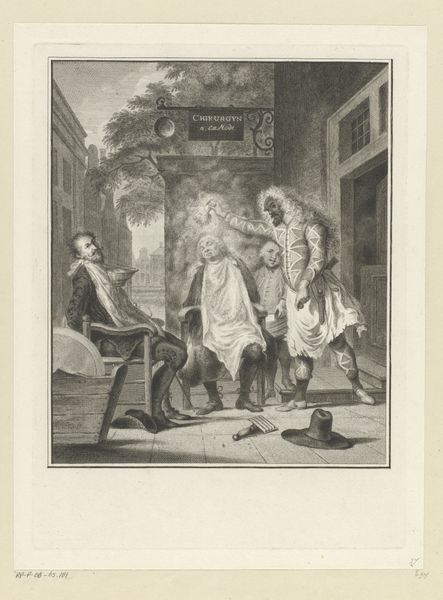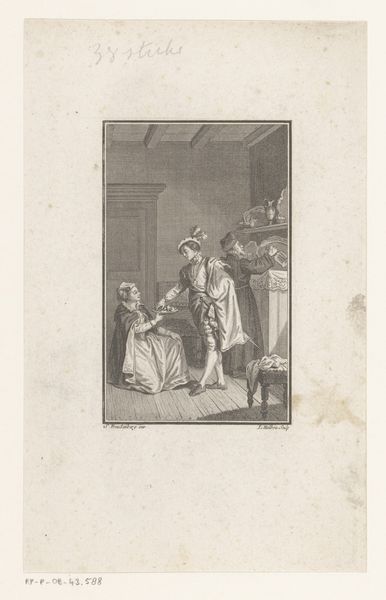
Dimensions: height 162 mm, width 104 mm
Copyright: Rijks Museum: Open Domain
Editor: Here we have Daniel Chodowiecki’s "Clarissa herkent Lovelace," an engraving from 1784. The scene feels intensely personal and claustrophobic despite being a rather formal interior setting. What catches your eye in this work? Curator: Immediately, I’m drawn to the process of engraving itself. The act of meticulously incising these lines into a metal plate – consider the sheer labor, the skilled hand required to depict this domestic drama. This isn't simply image-making; it's a material act, tied to the means of production and, crucially, consumption. How do you think the print medium influenced the accessibility of this narrative for its 18th-century audience? Editor: I hadn’t considered the implications of it being a print so much. I suppose it allowed for wider distribution. Was this a popular subject at the time? Curator: Precisely. Prints like these were often tied to specific social strata. We must ask, what kind of household would consume this image, what kind of discourse it fostered among its viewers? And consider, too, the very materiality of paper and ink—mundane elements imbued with cultural weight through this reproductive process. This artwork is therefore so much more than a narrative illustration. Editor: It makes you consider who the intended audience was. Middle-class families wanting a daily scene of morality to guide themselves perhaps? Curator: Indeed, this work’s significance is found in the dialogue between labor, material, and consumption that prints like these facilitated. Through that distribution, Chodowiecki was not merely creating art; he was participating in a larger socio-economic structure of art. Editor: I see. It really shifts the focus from the figures depicted to the mechanics behind getting the art into people’s hands. Thank you!
Comments
No comments
Be the first to comment and join the conversation on the ultimate creative platform.
